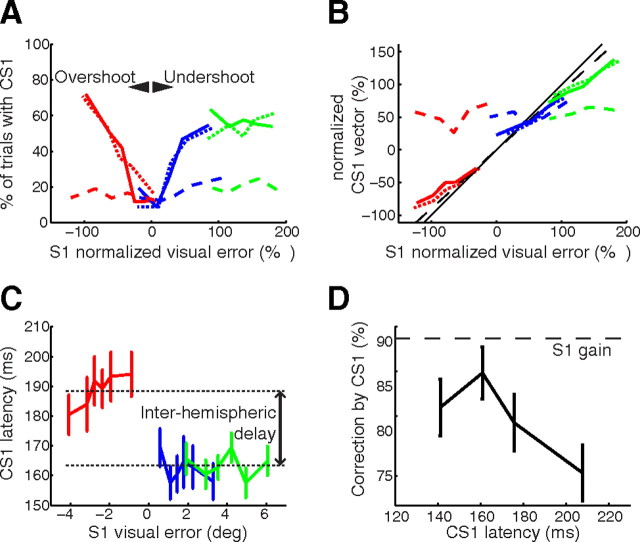Figure 6.
Reflexive corrective saccades after S1 only provide a suboptimal correction. A, Frequency of corrective saccades as a function of the signed visual error at the end of S1. The visual error is expressed as a percentage of the potential intrasaccadic perturbation amplitude (dotted lines, Target; solid lines, Target+Background; dashed lines, Background; red, perturbation R−; blue, no perturbation R0; green, perturbation R+). Note that the generation of a corrective saccade was unrelated to the actual motor error in the Background condition. B, Undercorrection of corrective saccades. Signed amplitude of CS1 as a function of the signed visual error at the end of S1 for different conditions and perturbations (same legend as A). Visual error and CS1 vector are expressed as percentage of the potential intrasaccadic perturbation amplitude. Note that visual target information is necessary (no correlation between visual or motor error and CS1 vector in Background). Black solid line, Full correction of the visual error; black dashed line, partial correction of the visual error with mean gain of S1 (0.91). C, Latencies of corrective saccades as a function of the signed visual error for different perturbations in Target and Target+Background conditions (same conventions as in A). D, Correction of the visual error introduced by CS1 as a function of CS1 latency in Target and Target+Background conditions.

